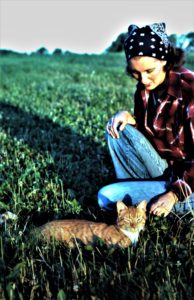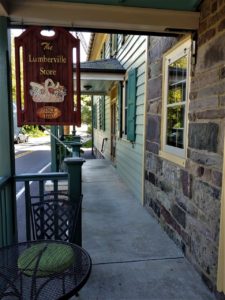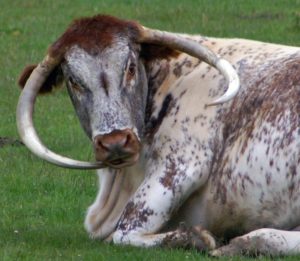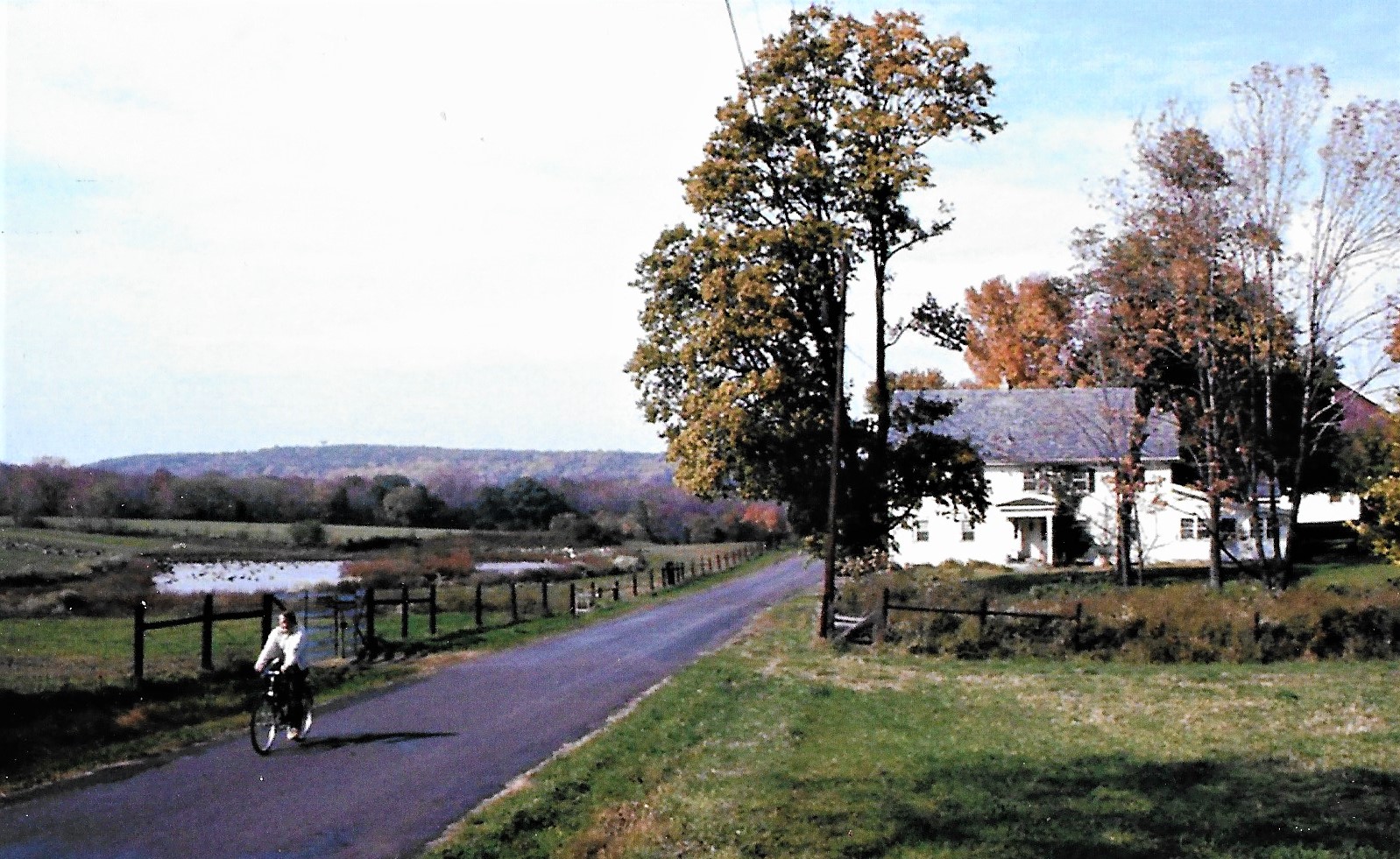“Characters of the first respectability” showcased European cattle and sheep.
In the 1970s Mary Anne and I moved from Yardley to Buckingham’s farm belt. As newlyweds, we rented the upper floor of Charlie and Anna Simon’s beautiful stone farmhouse on Holicong Road. It was our first introduction to farming. The Simons raised hogs and cattle, planted fields and stabled horses next to a riding rink on their 100-acre spread. We enjoyed casual walks on the property with our orange tabby Spudg, the three of us being trailed by a long line of horses. No fear. I personally experienced sitting alongside Charlie in his harvester reaping hay. It was hard work amid swirling dust and biting insects stirred by the passage of his mechanical monster. But Charlie loved the daily routine in keeping Pine Holo Farm productive and picture-perfect.

Occasionally I dropped in on local farmers who met in the downstairs living room. I took a bit of good-natured ribbing as a political reporter covering county government in Doylestown where Anna chaired the board of assessment. We always shared a good laugh and there was a gentle spirit about the men. When puppies were born on the farm, Charlie couldn’t wait to show us, carefully cradling them in his calloused hands.
Every August we were the Simons’ guests at the annual Middletown Grange Fair in Wrightstown where farm equipment, livestock, a country carnival and recipe contests brought farming life out in the open. I got to wondering: When did Bucks host its first fair? I found the answer in George MacReynolds’ book of county place names. It was on Aug. 23, 1811 in the Solebury village of Ruckman. That was just 35 years after George Washington made his famous crossing of the Delaware a few miles away.
You have to reach back to the story of newlywed John Ruckman to understand how the fair came to be. In 1802, he and wife Rebecca bought George Wall’s general store that still exists at the confluence of Pauncacussing Creek and the Delaware River in Solebury. Wall was a Revolutionary War hero who tutored young John in surveying techniques. Wall not only built his store, he also constructed two saw mills, a grist mill and a school next to his river landing. The settlement was important because Philadelphia brokers visited often to buy lumber milled from logs floated down the Lehigh and Upper Delaware Rivers on giant rafts. So many logs the town became Lumberville, the home today of the historic Black Bass Inn.

Besides owning Wall’s store, Ruckman prospered as a surveyor. By 1807, he and Rebecca purchased the Forst Estate 4 miles south of town on Upper York Road near present day Peddler’s Village. They sold their store and loaded all their belongings aboard a horse-drawn sleigh and sleds to make the move to the estate where Ruckman became a farmer. He later opened a tavern and general store beside the road. Rebecca’s buoyant personality and her husband’s business acumen made them pillars of the local community. Their home became the site of the first general election in Solebury in 1808, a tradition that lasted for the next 56 years.
In 1811, the Ruckmans hosted the county’s first agricultural fair under the auspices of the newly-formed Bucks County Society for the Encouragement of Agriculture & Domestic Manufactures. The exposition’s main draw was livestock. Dr. Israel Cark of Middlesex, N.J. brought a cow, a calf and a yearling Heifer “of the celebrated Holland milk breed,” according to minutes of the fair. “They were large & handsome & sold for 42, 46 and 26 dollars respectively.” (That’s between $410 and $830 today.) John VanHorn arrived at the fair with a heavy, big-boned English cow he sold for 33½ dollars. Joseph Eastburn brought an imported Bakewell English Bull and his calves. The calves were “large & handsome & very much resembled their sire in point of symmetry and beauty; one of them, a Heiffer, about 6½ months old owned by Mathias Hutchinson weighed on foot 492 pounds.”

Sheep also were a prized attraction. Lawyer Samuel D. Ingham and Moses and Aaron Eastburn offered “elegant sheep of the famed Merino & highly improved Leicester breeds of different grades of blood from half to full blood.”
The fair by all measures was a success and attended by “many characters of the first respectability,” according to fair officials. “Harmony & good order prevailed throughout the day.”
What John Ruckman inspired that day would take root in 1948 as an annual county fair at the Middletown Grange every August in Wrightstown. As for Ruckman, he was elected county commissioner in 1826 and served as a county judge. He fathered 12 children. Prior to the Civil War, he and Rebecca sheltered a runaway slave from Maryland, thus becoming part of the fabled Underground Railroad smuggling slaves to freedom in the North.
***
Sources include “Lumberville: 300 Year Heritage” by Willis Rivinus published in 2006; the Solebury Historical Society, “Place Names in Bucks County Pennsylvania” by George MacReynolds published in 1942; “What’s in a Name” by Sheila W. Martin published in the Dec.1968 issue of Panorama magazine, and a history of the Middletown Grange found on the net at https://middletowngrangefair.org

